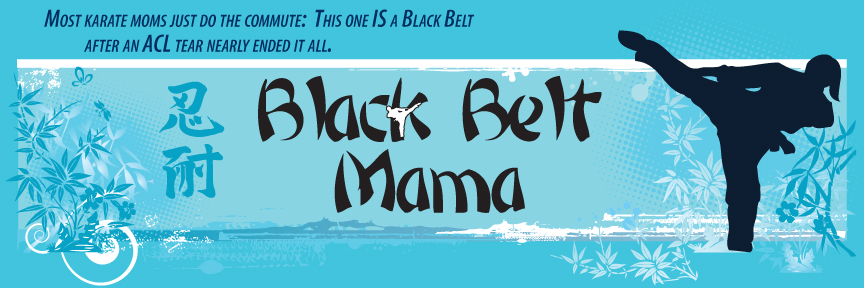February 29, 2008
We’ve Got it ALL Wrong
When I was a high school English teacher, my students spent an entire week of our Julius Caesar unit decorating the classroom to look like ancient Rome. While many students in the other sections of 10th grade were busy working on study guides, my students were studying architecture and erecting carpet rolls into pillars, drawing replicas of the statues and art seen at that time that were hung up around my classroom and preparing to become ancient Romans. On one of these days, a principal was walking the halls and noticed that the entrance to my room now had pillars as seen in all the Caesar movies. He walked in and was shocked to find that he had been transported back to ancient Rome.
My students didn’t sit at their desks for that unit and take turns reading lines. Instead they requested parts and stood in the front of the classroom and acted the play out. It was a play after all, meant to be acted out, not read like a newspaper. I can pretty much guarantee you that my students had a much better understanding of Julius Caesar and what actually happened than the students who sat in other classrooms filling out 18 pages of study guide while they tried to read the play independently.
During my second year of teaching, the English teachers and administration decided that students should have 10-15 minutes of SSR (Silent Sustained Reading) in our classrooms. I was all for it. I knew that many of my students didn’t pick up a book outside of the classroom and I was happy that we were told to give them that time to read. Each quarter they created a cool project based on something they read. Some of my students crafted tattered looking journals of what it might be like to live on a deserted island. Others made fashion portfolios of what the styles might have been during the time period they were reading about. It was a great way to get others interested in the books and the students really seemed to enjoy sharing what they had read and learned.
Half way through the year, the administration changed their mind, and told us that we should instead use 10-15 minutes a day drilling out students with multiple choice questions as seen on the state tests. A veteran teacher and I spoke up. We told the administration that all the research out there says that teaching to the test teaches nothing but how to take that test. No real learning takes place. The research also states that students who are exposed to active learning, who aren’t forced to take standardized type test after standardized tests, actually do better on standardized tests overall. It didn’t matter. Despite a Master’s degree and many hours of classes that said otherwise, we were overruled. That was my last year of teaching.
Since I left the world of education, it’s only gotten worse. I have several friends who are still teaching in classrooms and the emphasis on testing, testing, testing, is stronger now than it ever was. Today I read an interesting article in The Wall Street Journal about students in Finland. The Finns are kicking our butts. I read the article with great interest and there are several things that stand out as much different from the classrooms of today.
First, the Finns don’t start going to school until they are over the age of seven (To all those who have silently shaken their head at me for not putting my kids in preschool or Big I in full day Kindergarten, read that line again). They rarely have more than a half hour of homework per night. They don’t have clubs, honor societies, sports or tracked classes, and there is little or no standardized testing. Despite the fact that their teachers have the freedom to come up with their own materials and choose the books and materials for their classrooms, the students score higher than every other country in the world in science. In math, they’re number two, coming in a point behind Taiwan. In reading, they score only slightly less than South Korea, also coming in second. In Finland, teachers are trusted to do what’s right for their students and they’re obviously doing it.
When people from other countries go to observe their classrooms, they find simple chalkboards, not technologically laden classrooms, an environment where the more advanced students are helping the slower students, highly educated teachers, and kids who take responsibility for their own learning and actions.
I can’t tell you how many times I had parents calling me to make excuses for their kids on why they couldn’t complete their homework or show up after school for extra help. Only about 30% of my students completed their homework each night. The other 70% didn’t want to take responsibility for their learning. These were the same students who came groveling to me the week before report cards came out asking if they could still turn in those 10 assignments that never got finished. I had parents and coaches who came lobbying for these special privileges as well. For the record, I never caved in. The Finns don’t seem to have these problems.
When they come here for student exchanges though, they are often asked to repeat the year upon returning. In the article, one student who spent a year in the states said that all her tests were multiple choice, a project consisted of spending an hour gluing a poster and most kids didn’t complete their homework. So why do teachers do these types of things when they obviously aren’t working for the students here?
Education administration is so ridiculously top-heavy. While there are plenty of good administrative people, there are plenty of people who sit at the top collecting top dollar salaries and dictating to teachers what’s best for their students when they haven’t stepped foot in a classroom in a decade. Administration and government need to get out of the classrooms and let the teachers do their jobs. Given the time and materials and freedom to do so, I think most teachers would choose to forgo the multiple choice tests that administration dictates are necessary and create more active learning environments where true learning takes place. There’s a reason why even my Special Education students had a better comprehension of Shakespeare than some of the other kids from classrooms where they just sat and read Caesar. I didn’t do anything in that unit that translated to state tests, but the learning was apparent.
While educators from around the world are studying how the Finns are getting it done, I think they should be looking in both the classroom and beyond. It’s not just how teachers are teaching in the classroom. It’s also the home life that matters. The truth is that there are a great many parents who are not involved enough in their children’s lives here. We have students who don’t take responsibility for their actions or education. We have a society full of people who don’t see the importance of learning for the sake of learning. This is something that has to change, and the first place it has to happen in order for us to compete with the rest of the world is in the home.
***Speaking of "education," Monday begins Admired Martial Artists Month here at BBM. I’m SO excited for Monday. The articles are rolling in from our esteemed list of contributors and I think you’re going to REALLY enjoy reading what they have to say! Grab the button and help spread the word! Thanks to Becky for all the great buttons!!!























Very interesting. I’m going to have to take some time and read this when I have a little more of an opportunity to respond.
Some quick hits, though: I agree that plays are meant to be acted out, and I FIRMLY believe that a lot of the shakespearaphobia that students experience (“I don’t understand the language!”) is because they aren’t acting it out.
I agree to an extent regarding standardized testing. But that’s part of the bigger topic.
Interesting topic.
What a big topic, and I can’t hope to do it justice.
First, there is no simple way to change our education system. There is a lot of truth in the assertion that parents and students have to be more responsible for taking ownership of their education. At the same time, there is this myth that teachers are all noble, well educated, competent educators. Unfortunately, this is not always true. Teachers are just as likely to be haggard, unimaginative babysitters with obsolete or marginal skills.
This is, at least in part, due to the value we place on the profession as a society. We don’t pay them enough, but by the same token, we fail to hold them to a high enough standard. The good teachers don’t get paid enough, while the bad ones are protected, or worse, retained because the best and brightest are working somewhere else.
Funding is also an issue. So many of the programs that schools have are funded with so many strings attached that there is little latitude within the schools to really innovate. The No Child Left Behind Act (as a convenient example) is a travesty that has left a destructive wake in its path.
Regarding education for its own sake, I think that learning is worthwhile, but that as a society this isn’t a measurable goal. Standardized testing for me is a way to make sure that we are teaching measurable skills. If the test measures a kid’s ability to read with comprehension, I have no problems with a teacher teaching to the test. If the test measures a child’s ability to perform basic personal accounting, great.
If I were king of the USA, I’d change a few things. First, I’d eliminate Summer Vacation. It’s as often as not a hardship to the family struggling to find day care for 3 months out of the year. It’s also a detriment to education as schools have to reteach many of the basic skills taught the year before because the students forgot them over the extended break. I’d organize the school year around 2 or 3 week breaks each quarter.
I’d eliminate homework, excepting extended projects such as science fair, reports and the like. Homework is often busy work designed to reinforce the lesson. If the child doesn’t understand the concept will serve only to reinforce the wrong way to do something. Also, if the child has questions, we’re at a point where the kids are learning stuff that is, quite frankly, beyond the parent in some cases. My 6th grader is learning pre-calculus and trig stuff. That’s about as far as I ever got, and I’ve forgotten most of it. I’m officially not competent to help my child with his math homework. So, if he’s got an assignment due and no way to do it, he’s screwed.
Another problem I have with homework is a quality of life issue. Kids should have an opportunity to be kids. Along with that is as adults we are often told to reduce stress. Don’t take our work home with us. Arrange to spend the time we have with our families WITH our families. Homework just doesn’t make sense. We make our kids do 1 to 3 hours of homework every night, but then try to teach them otherwise as adults? I don’t get it.
So, in summary, living in the real world, I think we need to focus on teachers first. We can’t fix “parenting” in America easily. We can, however, work to hold teachers more accountable, and work to recruit the best and brightest. In conjunction, we should compensate them accordingly. I would also examine our “standardized tests” to ensure that they are measuring what we really want our students to learn. If they are, great. The rest are just things I wish we could do.
Sorry this rambled on so long. This could easily be a book, and I don’t have time to go back and trim it up. Hopefully it makes a little sense.
here here… It’s the same stuff year after year… being STILL in the classroom, I can voice the same issues are happening and it’s NOT getting any better… I can say that I’m teaching some test techniques, but also still doing the interactive learning… it’s the one surefire way to get the kids involved with their learning!
thanks for the topic!
Hmmmm….still in the classroom here and have much to say on this. You know I agree with you on these issues. I think I will have to write a post on my blog so as not to burden your comments sections. Very interesting topic!
Eek. Is there an acceptable limit to comment lengths? I’ve never been good at saying something with 3 words when 10 will suffice. 🙂